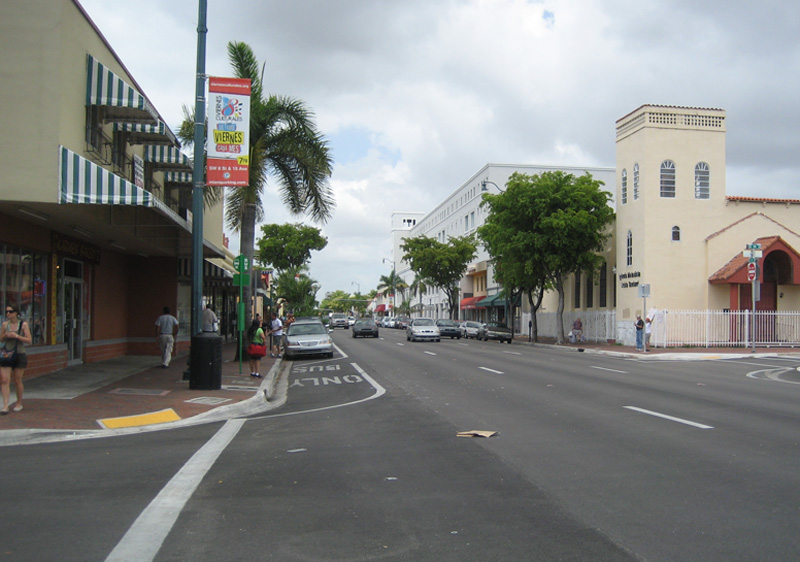Source: WTL© photograph (2009).
Comments: In no small measure, Miami's stature as a great international city is due to the more than a half millions Cubans who began arriving in Miami in the 1960s. This street, Calle 8 (8th Street), is the hub of Florida-Cuban cultural life in a neighborhood known as Little Havana. Greater Miami has a population of about 410,000, but the metropolitan area has nearly six million residents. Due in large measure to its geographical location near the Straits of Florida that separate Florida from Cuba, Miami is a city connected to the world by air, ship, finance, politics, ethnicity, and demographics. Miami is a dramatic city due to its more than 50 skyscrapers and spectacular coastal vistas and neighborhoods. The first inhabitants were the Tequesta people, who date back to at least a thousand years ago. Later, the Timucua native people northeast Florida migrated via Miami on their journey from Venezuela to Florida. Relating directly to Latin American humanities, Pedro Menéndez de Avilés, the founder of San Agustín / St. Augustine to the north, claimed the Miami area for Spain in 1566, and a year later the first Spanish Catholic mission was built there. Miami finally became an incorporated American city in 1896. It was actually founded by a woman from the Miami region of Ohio. Major growth came after World War II and in the 1960s. Because of Miami's reality as the "Gateway to Latin America"—a title contested by other cities like Houston and Los Angeles—and because over 65% of Miami's population is of Hispanic origin (Spanish is also the native language of over 65% of the city's population), in this course we are now going to take a brief look at the city's Cuban core core. Of historical note is the fact that, when England took possession of Spain's colony of La Florida in 1763, most of the Hispanic Floridians, their Indian allies, along with their slaves, and free blacks fled from Florida to Cuba. Many of these diasporic people returned in the Second Spanish Period (1783-1821), but others stayed in Cuba. It is likely, in a curious historical turnaround, that not a few of the Cubans who fled the Castro regime after 1960 were descendants of the original Hispanic Floridians and Afro-Floridians who fled in 1763. Finally, the following simple fact may help illustrate Miami's orientation among world cities. Miami has twelve official sister cities: Bogotá, Buenos Aires, Lima, Madrid, Port-au-Prince, Santiago, Salvador da Bahia, Santo Domingo—all in Latin America—and four more, Nice, France; Qingdao, China; Varna, Bulgaria; and Kagoshima, Japan.
For an additional very brief visual-verbal tour
of Calle Ocho, see: => Calle Ocho Index.

